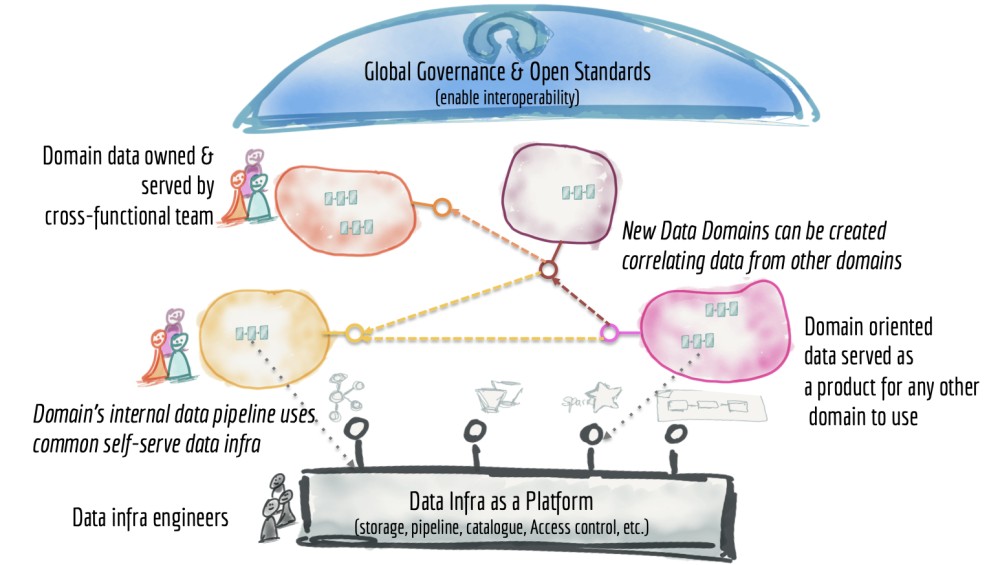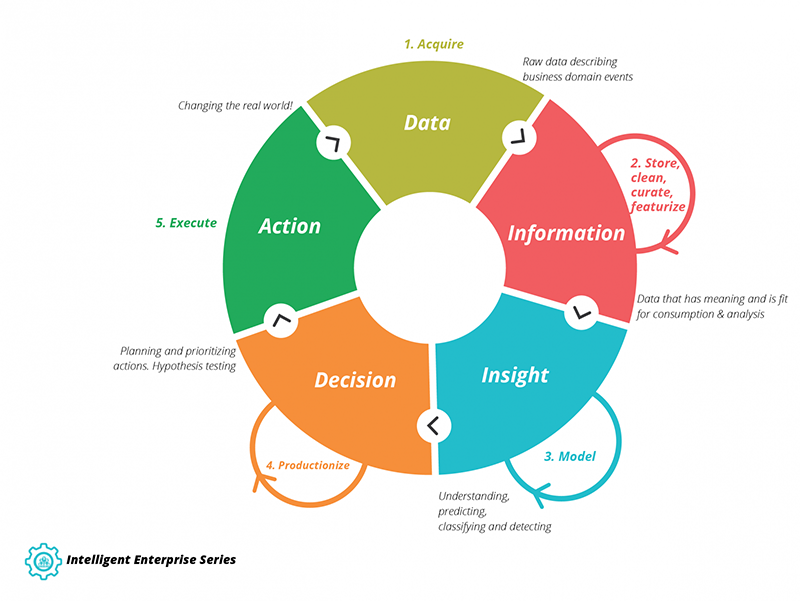The power of data and analytics is no longer elusive, regardless of the level of business. Once far-fetched technologies like big data, advanced analytics, artificial intelligence, machine learning have captured the attention of everyone from IT professionals, data analytics, data engineers, to top-level enterprise executives.
Various industries, business functions and disciplines have embraced the transformative capacity of data analytics and its promise to optimise business processes, cut costs, increase revenue, improve competitiveness and accelerate innovation.
Data analytics technology is constantly evolving and advancing. Methods and tools that were state-of-the-art just six months ago may be well outdated as we speak. In order to realise the inexhaustible opportunities that data offers, enterprises must keep pace with the ever-changing landscape of data and analytics and be prepared for transformations and challenges ahead.
The global big data and business analytics market was valued at 168.8 billion U.S. dollars in 2018 and is forecast to grow to 274.3 billion U.S. dollars by 2022, with a five-year compound annual growth rate (CAGR) of 13.2 per cent, reports Statista.
As the year is drawing to close, data and analytics experts have already started putting together a list of data analytics trends and predictions we can expect to see next year. Below are some of the trends that would dominate the market.
Moving towards faster, smarter and more responsible AI
Gartner predicts that 75% of enterprises will shift from piloting to operationalising AI by 2024, driving a 5X increase in streaming data and analytics infrastructures. In the current COVID-19 reality, AI and machine learning are critical for providing vital insights about the virus and realigning supply and the supply chain to new demand patterns. Because of this “pre-COVID models based on historical data may no longer be valid”, reports Gartner.
Additionally, the crucial investments in new chip architectures that can be deployed on edge devices are accelerating AI and ML computations and workloads, which reduces reliance on centralised systems that require high bandwidths. The results could be more scalable AI solutions that would lead to higher business impact.
Dynamic stories replace dashboards
So far, dashboards users have spent a lot of time and do manual work to get deeper insights from pre-defined dashboard. But as AI and machine learning techniques are getting more accommodated into business intelligence platforms, we’ll see the spread of dynamic data stories which would offer more automated and consumerised experiences will leave behind the visual, point-and-click authoring and exploration, predicts Gartner. Data stories will become the most widespread way of consuming analytics by 2025, and 75% of these stories will be automatically generated using augmented analytics techniques, without requiring users to perform their own analysis.

Decision intelligence
More than a third of large organisations will have analysts practising decision intelligence, including decision modelling by 2023. Decision intelligence as a field includes a range of decision-making techniques. Gartner describes it as a domain that encompasses applications like complex adaptive systems that combine multiple traditional and advanced disciplines.
The biggest advantage of decision intelligence is that it provides a framework that brings together traditional techniques like rules-based approaches, together with advanced techniques like AI and machine learning. This enables non-technical users to alter decision logic without involving programmers.
X analytics
X analytics is a term coined by Gartner in order to be used as an umbrella term, where X can substitute a range of variables presenting structured or unstructured data whether it’s text, audio, video, vibration, emotion or other content. In reality, Gartner predicts that X analytics will trigger major innovations and transformations in 75% of Fortune 500 companies by 2025.
According to Rita Sallam, Gartner’s research VP, this type of data hasn’t been really leveraged by organisations, and there is great untapped potential here such as image and video analytics for supply chain optimisation, or video and audio analytics for weather or for traffic management. But the course is shifting as interest and effort for X analytics is growing.
X analytics utilised together with AI and other techniques such as graph analytics (another top trend) will play a key role in identifying, predicting and planning for natural disasters and other business crises and opportunities in the future, reports Gartner.
Augmented data management
We’ve talked about augmented data management in a previous article here on Hyperigh Read, where we explored how it optimises and automates data management tasks by infusing AI and ML techniques into all aspects enterprise data management disciplines.
Augmented data management will also continue to have an even greater impact for companies beyond 2021. As Gartner noted, “Organizations utilising active metadata, machine learning, and data fabrics to dynamically connect, optimize, and automate data management processes will reduce time to data delivery by 30% by the year 2023”.

Cloud is a must
As for the rest of the trends, Gartner sees as imminent for 2021 and beyond is that public cloud services will be essential for 90% of data and analytics innovation. Cloud-based AI will increase file-fold between 2019 and 2023, making AI one of the top workload categories in the cloud, relates Gartner. This massive shifting trend had already started before the pandemic, but it was accelerated even more as the cloud became essential to manage business operations remotely.
However, Gartner warns that as data and analytics moves to the cloud, data leaders still struggle to align the right services to the right use cases, which may amount to unnecessary increased governance and integration costs. To prevent this, data and analytics leaders need to prioritise workloads for the cloud capabilities and focus on cost optimisation and innovation when moving to the cloud.
Collision of the data and analytics worlds
Another of the predictions is the collision of the data and analytics worlds. Traditionally, data and analytics capabilities have been considered distinct capabilities, but Gartner predicts that non-analytic applications will evolve to incorporate analytics over the next few years. This collision is expected to increase interaction and collaboration between historically separate data and analytics roles, impacting not only technologies and capabilities but also the people and processes that support and use them. If we look at statistics, it’s expected that by 2023, 95% of Fortune 500 companies will have converged analytics governance into broader data and analytics governance initiatives.
Apart from the Gartner trends presented by Rita Sallam, Distinguished VP Analyst, there are additional predictions that promise to disrupt the data and analytics market next year.
Sven Balnojan PhD, DevOps & Data Scientist, has outlined several trends he sees happening in 2021 from a first-hand perspective.

Data Mesh
From a more technical side of the coin, Data Mesh is increasingly gaining in popularity among data practitioners. At its crux, Data Mesh reflects treating data not as a byproduct, but as an actual product.
As opposed to software development which has gone under great changes enabled by DDD, microservices & DevOps in order to meet growing business needs, data and analytics has somewhat been slower to catch up with it, points out Sven. As a result, Data Mesh is seen as a fresh approach to speed up decision making based on data in a company with a modern development approach. In order to accommodate this shift, there are three conditions that an organisation must meet:
- Software teams must consider data a product they serve to everybody else, including analytics teams
- Analytics teams must build on that, stop hoarding data and instead pull it in on-demand
- Analytics teams must start to consider their data lakes/ data warehouses as data products as well.
The Data Mesh concept was first introduced by Zhamak Dehghani, ThoughtWorks Technology Advisory Board.

Continuous Intelligence
Some of the other trends that will drive the data and analytics landscape, Sven mentions Continuous Intelligence. It presents automatic near-real-time decision support & making via machine learning and lots of continuous data ingesting & crunching. As he argues, “Continuous intelligence is a possibility that exists now, and that did not exist before.” It’s the possibility to make the cycle from data to decisions & actions continuous, not “one-time”!
As the demand and amount of data are growing mind-blowingly, continuous intelligence allows companies to turn the data lineage into a cycle through which they can learn and improve, by going through the feedback loop multiple times, ThoughtWorks state.

Database as a Service (DBaaS)
We are already familiar with Data as a service (DaaS) which provides users and applications with a data management strategy that uses the cloud to deliver data storage, integration, processing, and/or analytics services via a network connection. But 2021 will see a rapidly spreading use of Database as Service (DBaaS), which integrates big data analytics solutions into data platforms, finds Analytics Insight. DBaaS allows users access and use a cloud database system without purchasing and setting up their own hardware, installing their own database software, or managing the database themselves. Cloud providers take care of hosting and managing data.
And it seems enterprises have already comprehended the benefit of DBaaS. As IBM states the market for DBaaS and cloud databases is among the fastest-growing Software-as-a-Service (SaaS) markets, expected to grow to US$320 billion by 2025.
This article was originally published at Hyperight Read.




